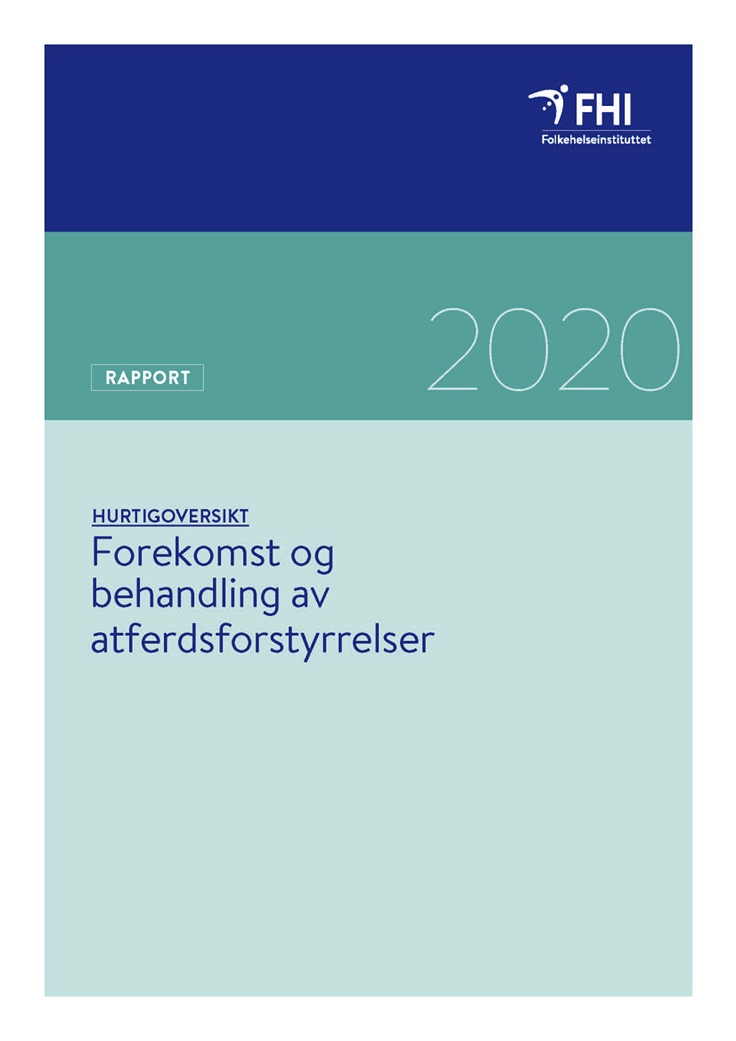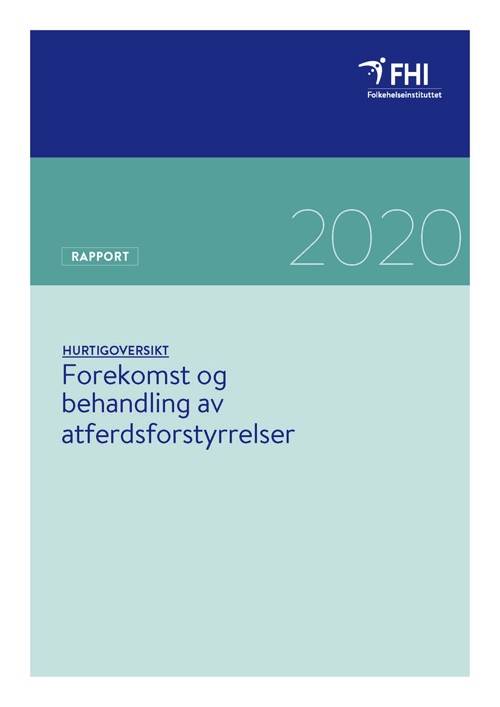Prevalence and treatment of conduct disorders: a rapid review
Systematic review
|Published
The Division of Health Services in the Norwegian Institute of Public Health was commissioned by the Norwegian Directorate for Children, Youth and Family Affairs to update a 2013 report on the prevalence and treatment of conduct disorders.
Key message
The Division of Health Services in the Norwegian Institute of Public Health was commissioned by the Norwegian Directorate for Children, Youth and Family Affairs to update a 2013 report on the prevalence and treatment of conduct disorders. The main research questions were: 1) what is the prevalence of conduct disorders among youth; 2) how many are receiving treatment in Norway; and 3) are youth who need treatment currently receiving it?
We conducted a rapid systematic review: a review conducted within a short timeframe and with simplified steps. The literature search identified 3,815 publications, of which 227 were read in full. Ultimately, we included 29 Nordic studies of prevalence and treatment. We did not assess studies’ methodological quality. We extracted data on treatment utilization from eight provider sources. The main results were:
- 5 studies measured diagnosed conduct disorders using population or registry studies
- 10 studies measured diagnosed conduct problems in tandem with other diagnostic categories, all from patient registry studies
- 9 studies measured non-diagnosed conduct problems in population studies
- 5 studies measured changes over time in non-diagnosed conduct problems during the past 10-20 years
- Between 2012 and 2019, more children and youth received Functional Family Therapy, PMTO, and Treatment Foster Care Oregon. There was no increase in utilization of outpatient mental health services, child welfare institutions, MST, or The Incredible Years
It was not possible to assess whether youth in need of behavioral treatment are receiving it

